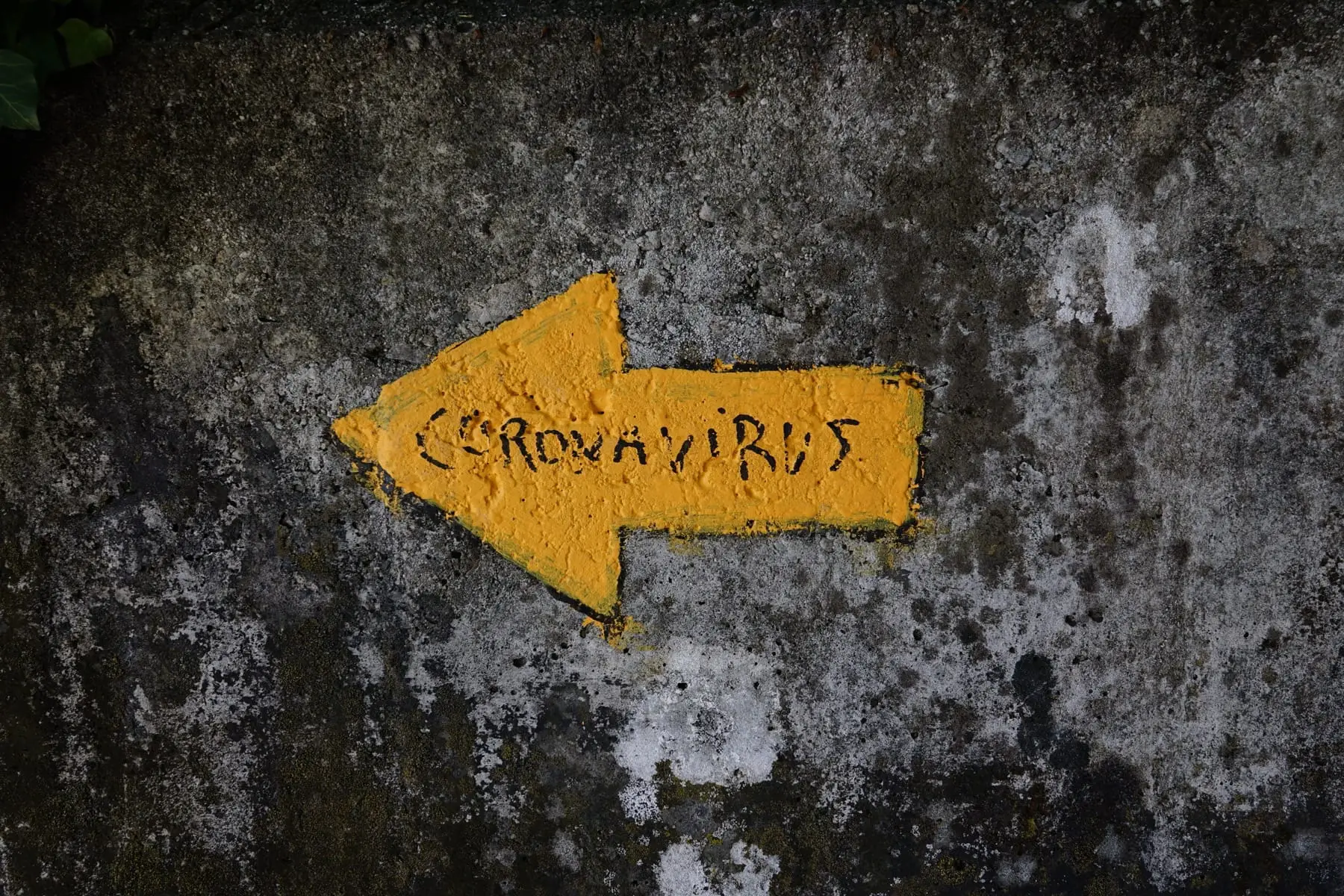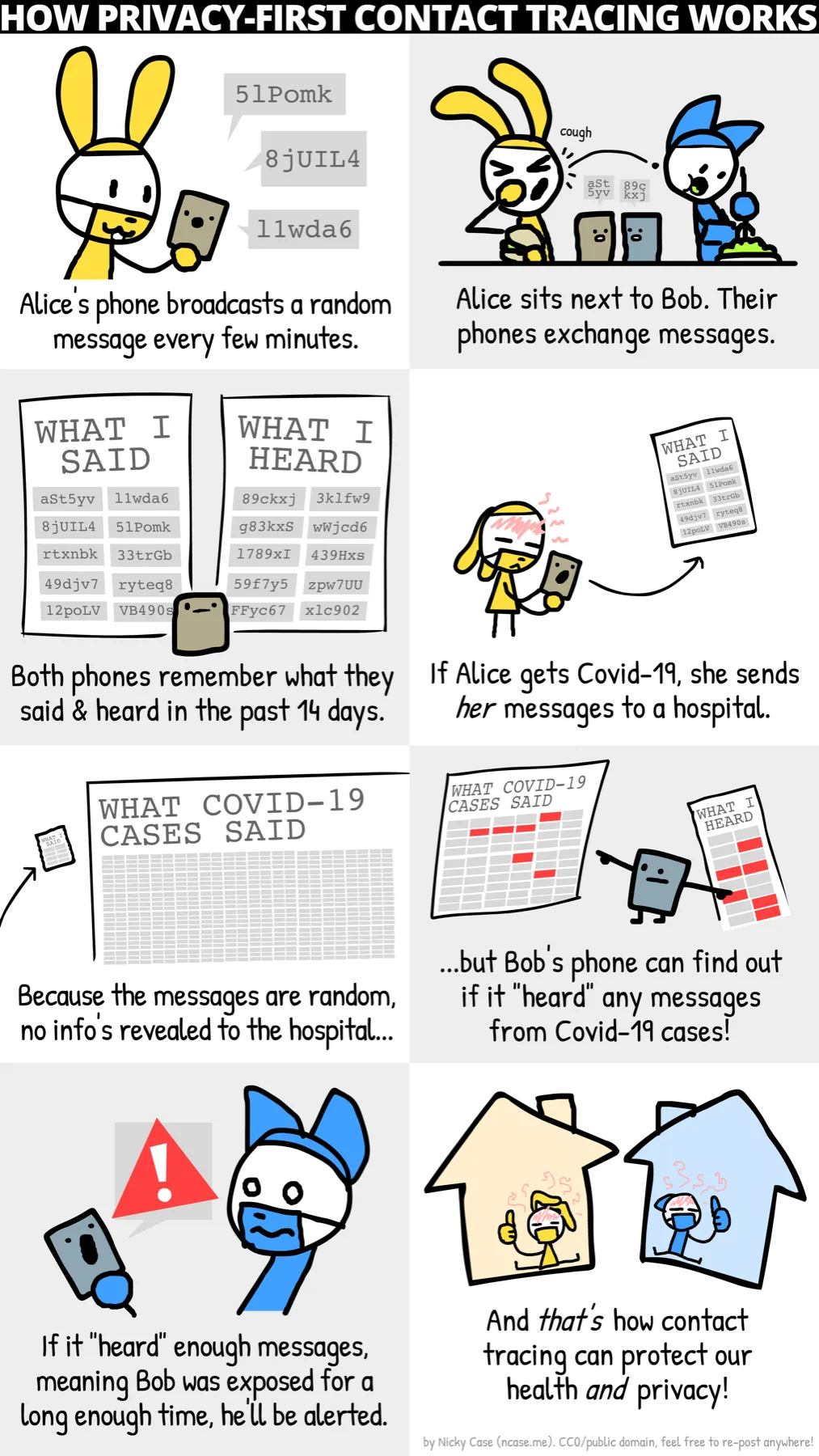Why You Should Use COVID Proximity Tracing Apps
How to Be One Step Ahead?
October 13, 2020 · Alex Ulbrich

Table of Contents
If you’re still unsure about using a COVID contact/proximity tracing app, I hope to give you some more insights.
tl;dr
- Contact tracing via an app is effective at stopping the spread of diseases (given enough users, i.e. more than 56% of the population).
- Use a privacy-preserving (i.e., anonymous) app that was designed specifically to track diseases, and hence cannot be used for other purposes.
- Use a decentralized app, i.e., an app that does not store identifiers on a server, but only relies information through it (i.e., infections).
- Be responsible. Report infections and stay home when sick.
- Share with your community.
What This Post is Not About
Trust in the Government or the Authorities
I don’t care whether or not you trust your government or your authorities. I. Don’t. Care. It’s your business. I believe most governments do the best they can. Others have their agenda. That is irrelevant to the discussion.
Trust in Companies and Businesses
The same is true for companies and businesses. I dislike the likes of Google and Facebook. I would prefer to pay for their services and get the same benefits without them using my data. If you’re OK with the fact that their apps ask for full access to your phone, collect all your data and behaviors, and nudges you regularly, fighting for your attention, that’s cool. It’s also irrelevant to the discussion.
Using COVID Tracking Apps
I’ll briefly explain how the different apps work and provide some references if you want more details. Then I’ll go through the best way to use these apps to get the most benefits. Finally, I’ll discuss our moral duty to protect each other.
How the Apps Work
Here’s a high-level explanation of the protocol:

Read the full comic, or find translations. Share with your friends and family!
Now for more nitty-gritty details. There are three models to perform contact tracing:
- Data grab model: It collects data from publicly and commercially available infrastructure to track users’ whereabouts. This model relies only on legal norms to avoid invading the users’ privacy.
- Anonymised data model: Same as above, but anonymizing the collected data before use. This is almost impossible to achieve in practice.
- Specifically designed proximity tracing models: This consists in designing a model that specifically minimizes information collection and that will solely be used for proximity tracing.
Although the first two approaches can work, it can easily be turned against the users given malicious intent.
Most COVID apps use the third model, which is the right way to go. That said, to inform the network of people using the app that someone is infected, some information must go through a centralized server. Here again, there are two approaches:
- Centralized: The server distributes the anonymised IDs and keep track of the contact graph for infected individuals in order to inform the network. This could be repurposed into a data grab model. One such approach is BlueTrace.
- Decentralized: The server only receives a notification when an individual is infected and propagates that information to the network. The computation takes place on the user’s device. One such approach is the dp3t.
For more details, have a look at the dp3t documentation. They have simplified explanations has well as graphics to illustrate.
Again, you can see that the second approach is better suited in case the authorities are compromised.
Most COVID tracing apps are using one of the two approaches above. You can generally find that information online. Note that even if the first approach might be ill abused, the amount of information shared (random IDs and their corresponding contact graphs) has a small footprint.
Note that the more people use the app, the better the privacy (it’s difficult to pinpoint a single infected individual among many) and the tracking.
From Wikipedia:
A team at the University of Oxford simulated the effect of a contact tracing app on a city of 1 million. They estimated that if the app was used in conjunction with the shielding of over-70s, then 56% of the population would have to be using the app for it to suppress the virus.11 This would be equivalent to 80% of smartphone users in the United Kingdom. They found that the app could still slow the spread of the virus if fewer people downloaded it, with one infection being prevented for every one or two users.11
How to Use the Apps
Using these apps means:
- download and install the correct app for your country,
- open the app and read up,
- disable any (battery) optimization for the app so that it to run in the background,
- enable Bluetooth at all times,
- get tested if you had a potential infection and stay home,
- provide the code to the app if you are tested positive.
If you have tested positive, these simple acts will help break the virus spread. But.
Yes, there’s a big “but.” The app does not disclose your information to the authorities, nor does it forces the notified users to do anything. It only informs them about potential infection. It’s up to them (you!) to act on it.
Some apps require you to share your phone location with them. Does this sound intrusive? It is. When that happens, it’s usually to check if you’re moving around when supposedly quarantined. Some authorities don’t trust their citizens that much (are they wrong?).
That means that it’s all up to us, all of us who received this notification, to be responsible. To stay home. To get tested after at least five days if no symptoms appear (to reduce the chances of a false negative). To quarantine if symptoms develop or you test positive. To protect others by adopting the right behavior.
Protecting Each Other
As more people are using the apps, our ability to be one step ahead of the virus increases. One step ahead means that not only should we quarantine infected individuals, but also quarantine potentially infected individuals as soon as possible. That greatly inhibits the spread of the disease.
Using an app for proximity tracing is also much more efficient and private than human contact tracing. Imagine you’re tested positive. Your doctor or the health authorities suddenly have to trace back your whereabouts and contact every person you might have been in contact with. And that every single time someone gets sick (which happens a lot).
It’s no surprise that health authorities are having difficulties keeping up with contact tracing.
Let’s help them out. Install the app. Be responsible.
Adopt the right behavior and protect your loved ones, your friends, and your colleagues. Notify them if you get a potential infection and if you are infected.
It’s worse if you don’t.
Stay safe, stay healthy. Care for and protect each other. Love.